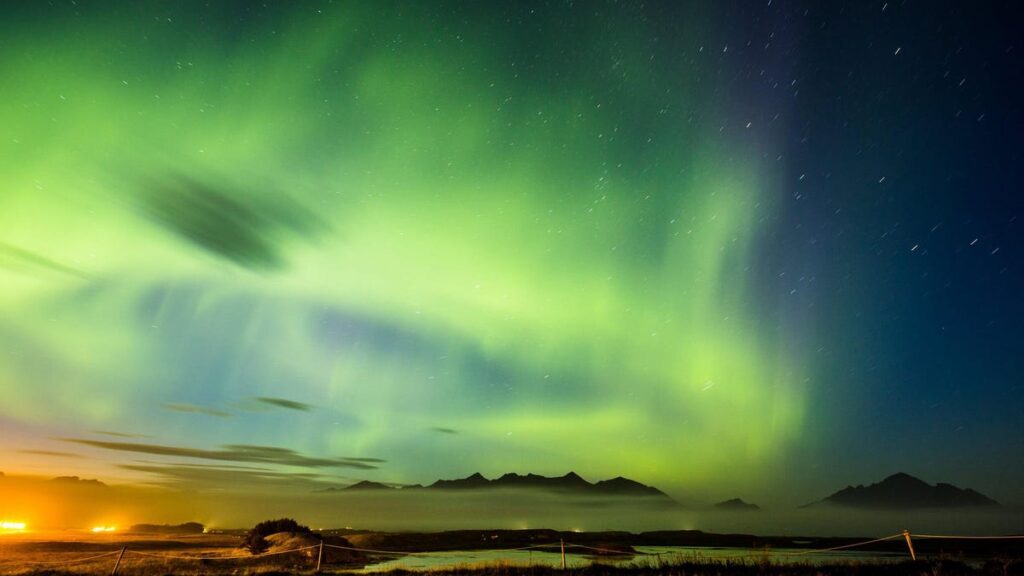Remember that dazzling night in May 2024, when the aurora borealis lit up states that almost never see its colorful glow? Some of us have been chasing that natural marvel ever since.┬Ā
Now, the sun is at its solar maximum, and many might get their chance to see the northern lights again. Late Thursday night and early Friday morning, a moderately powerful magnetic storm impacts the Earth’s magnetic field, making the aurora visible in 21 states.┬Ā
Don’t miss any of our unbiased tech content and lab-based reviews. Add CNET as a preferred Google source.
According to NOAA, the aurora will be visible in Idaho, Maine, Michigan, Minnesota, Montana, North Dakota, South Dakota, Washington and Wisconsin. Those with a high enough vantage point facing north should also be able to see it in Illinois, Indiana, Iowa, Nebraska, New Hampshire, New York, Ohio, Oregon, Pennsylvania, Wyoming and Vermont. Alaskans and Canadians will have the best view.┬Ā
This is only a prediction. The aurora could be stronger or weaker depending on how things go. If you’re just south of any of these states, it may be worth seeing if the aurora makes it down to you.┬Ā
This storm is a continuation of one that hit the US on Wednesday night, for which NOAA initially predicted a G2 magnetic storm but ultimately classified it as a stronger G3 storm.┬Ā
Both storms come from a pair of X-Class coronal mass ejections, or eruptions of solar material and magnetic field that the sun launched toward the Earth on Nov. 4.┬ĀX-class is the highest designation, so these ejections were pretty big.┬Ā
Tips for viewing the northern lights
The methods for viewing an aurora are straightforward.┬Ā
You’ll want to get as far away from the city and suburbs as you can to minimize light pollution. After that, you’ll want to get as high up as possible and then face north.┬Ā
The northern states in the US will have the best view, but those further south in the prediction zone may still see something if they’re high enough and it’s dark enough outside.┬Ā
Avoiding light pollution may be tough because the moon is almost full. It may drown out the aurora along the southern reaches of NOAA’s prediction area.┬Ā
If you do decide to head out, you also have a pretty good chance at spotting a shooting star since there are four meteor showers active right now, including Orionids, Leonids, Northern Taurids and Southern Taurids. Three of the meteor showers are scheduled to peak in November.
Read the full article here














